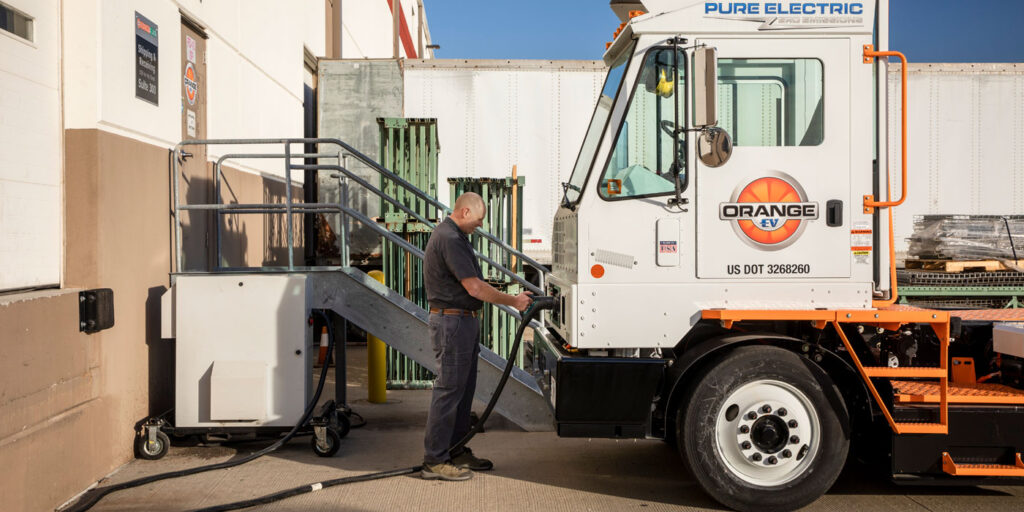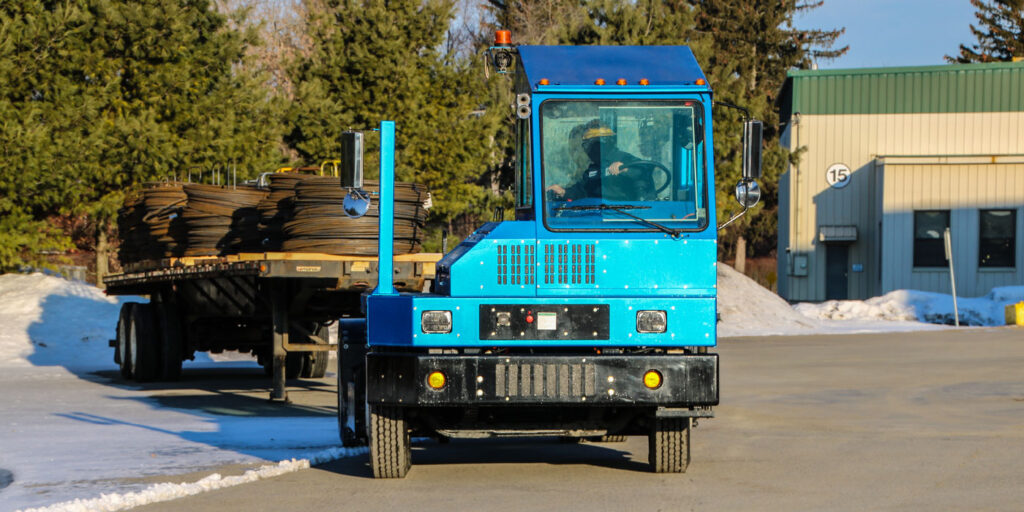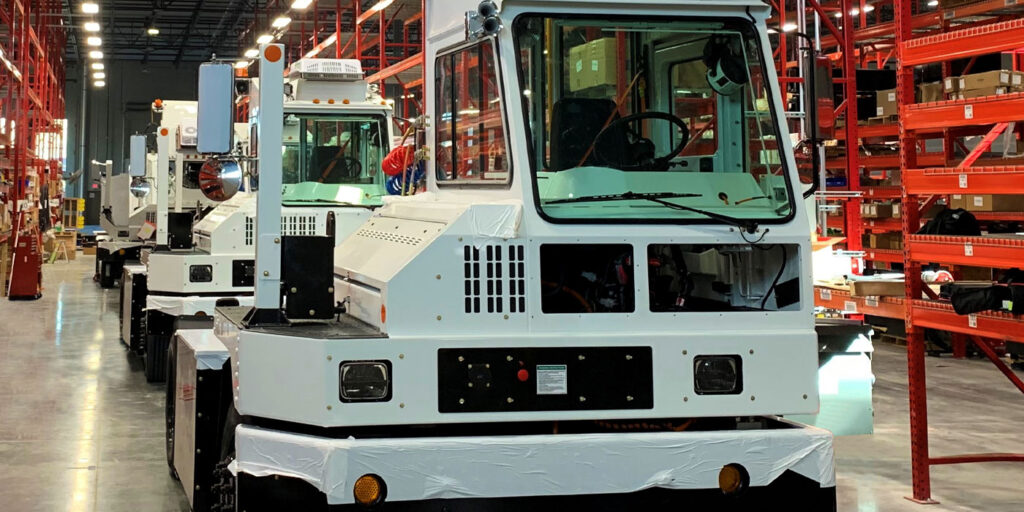As featured in The Buzz EV News.
The transition to electrification for the transportation industry is underway. One of the most successful applications of this revolution can be found in the rapidly growing usage of electric yard trucks, also known as terminal tractors, yard hostlers and many other names. The speed of adoption may surprise some, with Orange EV electric yard trucks already being used by more than 100 fleets. This scale of deployments has provided plenty of cold weather use case examples, including sites in Minnesota at temperatures of -33° Fahrenheit. As more and more data comes in, it’s proving that as long as the right choices are made upfront and the right behaviors are implemented on-site, an EV yard truck can be superior, regardless of the climate.
Lithium batteries vs. diesel fuel
Concerns about performance in extreme cold are not unique to battery electric vehicles. For diesel-powered trucks, the negative impacts of cold weather are very well known:
- Diesel fuel gelling at low temperatures can keep trucks from operating
- The need for block heaters to pre-warm diesel engines so that they will start
- Loss of diesel fuel efficiency during cold-weather operation
- Extended idling needed to maintain engine and in-cab temperature
- Excessive CO2 and particulate emissions produced
Lithium batteries, like the Lithium iron phosphate batteries used in Orange EV yard trucks, produce no local polluting emissions, and sites don’t have to worry about liquid fuel spills. Electric motors never need to idle, and electric heaters can warm up the cab much faster than a cold diesel engine might. And, of course, there are the financial savings, with the electricity to power an EV yard truck costing 85-90% less than diesel fuel.

Battery consumption and charging in cold weather
The EV truck’s performance shouldn’t be any different in cold weather, but what is different is the increased energy consumption that occurs from two primary factors: Heating the batteries and heating the cab. All Orange EV yard trucks come with built-in battery heaters that keep the batteries from getting too cold, even when there are sub-zero temperatures outside. Then using the in-cab heat will logically use more energy to keep the driver comfortable during colder weather.
Proper battery management and charging behaviors are especially key to the successful operation of a fleet of electric yard trucks in cold weather, but are important regardless of temperature, so we work closely with our customers to spec their truck and train their drivers. That said, it really comes down to these simple tips:
- When ordering electric yard trucks, select a battery size that allows for adequate daily range considering not just your typical duty cycle, but also seasonal peaks and potential cold weather lows.
- Keep your electric yard trucks plugged into their chargers when not in use – especially while unattended overnight or over weekends – so that the batteries don’t run down to zero from keeping themselves warm.
- Maintain as full a charge as possible during the shift by having the drivers plug the electric yard trucks into their chargers during breaks. Installing the charger near the driver break area is a critical factor to make this “opportunity charging” a habit.
Through 6 years of deployments and trucks running in wintry sites including Chicago, Buffalo, Minnesota, and Ontario, Canada, these steps have led to proven success.

Electric yard trucks have much lower maintenance costs
Our customers report dramatic reductions in their maintenance costs when using our EV trucks versus their diesels. Consider also that the strain and costs to maintain a diesel yard truck are even greater when it’s deployed in a cold, rough environment. Fleets may be initially skeptical when they hear about maintenance savings around 75%, but then they think more about what parts of their diesel truck drive most of their repair costs and downtime pain. Here’s a list of some of the components and fluids that you will not find in an Orange EV electric yard truck (note that some EV OEMs may still include some of these parts):
- Engine
- Transmission
- Emissions control equipment
- Exhaust system
- Radiator
- Water pump
- Coolant and coolant hoses
- Pistons
- Camshafts
- Engine Oil
- Oil pump
- Fuel tanks and filters
Imagine if the maintenance and repair costs for all of these items were zero for the life of your truck – even in frigid deployment locations. That’s what it can be like with an EV Yard Truck.

Electric yard trucks are the perfect way to start your EV transition
Any way you look at it, electric yard trucks can fit in perfectly with your current operations, even if they take place in a harsh, cold environment. Yard trucks are an ideal EV application, without any range anxiety, and supported by learnings and improvements from six years in market. Electric yard trucks provide you with clean, efficient, reliable, quiet, and cost-effective performance, while eliminating the hassles, noise, smells, and high fuel and maintenance costs of diesel yard trucks. What are you waiting for? Everyone from your drivers to your CFO and CEO will thank you for making the switch.
Published: February 7, 2022 /The Buzz EV News/
